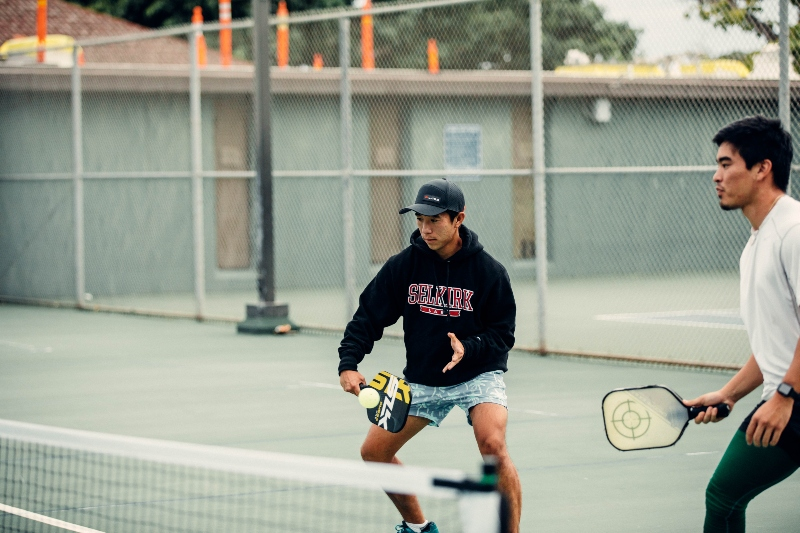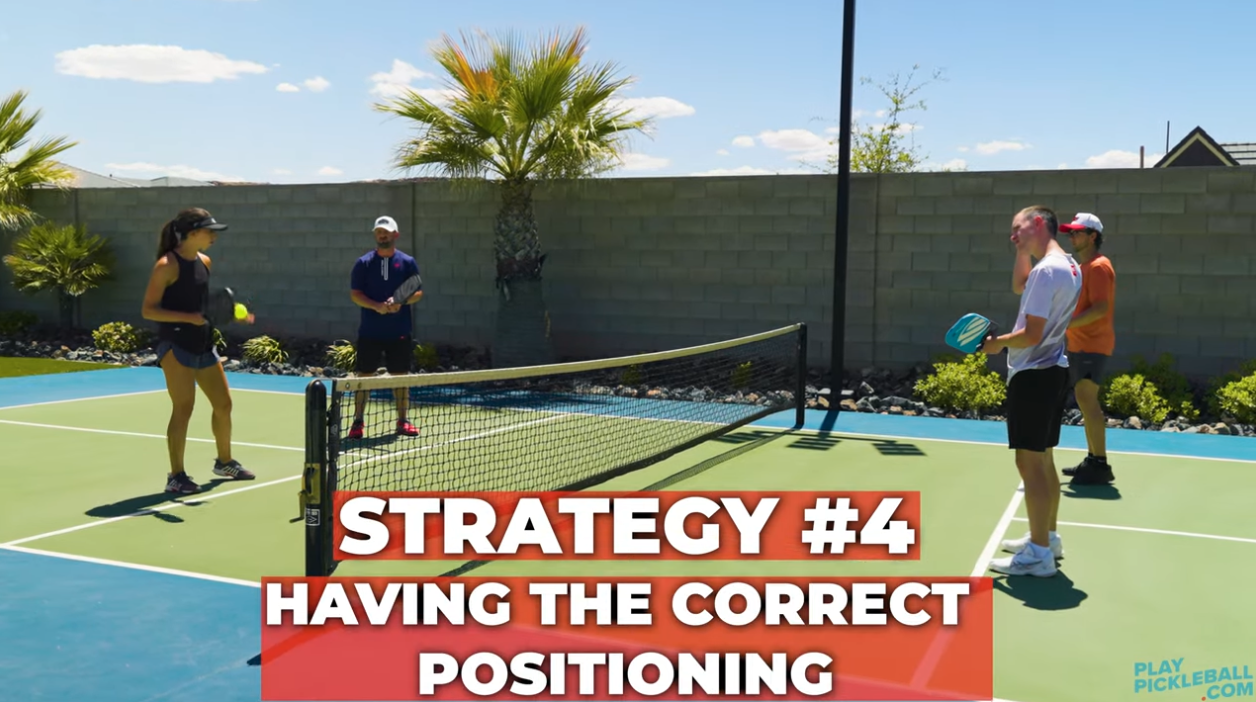The dink is one of the most important shots in pickleball because it often sets up your offense to win more pickleball games. Learn these five tips that will help you win every pickleball dink rally — plus, a bonus tip that's a little more advanced.
Tip #1: Learn to take pickleball dink shots out of the air
The first tip that will help improve your dink rallies is learning to take dinks out of the air. There are two reasons this is really helpful:
Taking your dinks out of the air will take time away from your opponent
If you go to take a deep dink out of the air, it will give your opponent that much less time to react to the ball.
Taking a dink out of the air creates an opportunity for fewer errors
When a dink is landing near your feet or almost behind your body, you are more likely to pop the ball up because the ball is getting out of your contact point zone.
If a dink is about to land at your feet and you try to hit it from your feet, you will likely either pop the ball up or hit it into the net. Instead, having your paddle out in front and taking the ball out of the air (if it lands a little deeper) will help eliminate any potential error.
Tip #2: Track the ball with your pickleball paddle
A lot of pickleball beginners, especially when they're dinking crosscourt, take too much time getting their pickleball paddle in position. They then have to swing their paddle back, and then swing the paddle forward, which causes a lot of errors during dink rallies.
Instead, you will want to track the ball and get your paddle in position, meeting the ball where the contact point is going to be.
Tip #3: Recover back to the kitchen
Another mistake that many pickleball players make that put your team at a disadvantage is backing off the kitchen line. Inexperienced pickleball players tend to step back to let the ball bounce, but then stay back instead of reestablishing in the right position. This puts your team at a massive disadvantage because there are so many holes on the court.
Playing at the kitchen line is the most advantageous and offensive place to play on the court. Instead of backing up and putting yourself at a disadvantage with positioning, try to hold the line. When you back up to get a dink, make sure you come back and recover to the kitchen. This will ensure that you stay offensive and you have the best positioning on the pickleball court.
Tip #4: Track the ball with your feet
Another tip to improve your dink rallies is to track the ball with your paddle and with your feet. If you’re dinking, especially if you’re in a crosscourt pattern, you will want to slide your feet to cut off any angles. If the ball gets pushed wide, you will have a lot of time to get there if the ball's on the other side of the court. Stay active with your feet, get in position with your paddle, and track the ball.
You should not keep your body, your chest, and your paddle facing forward when the ball's off to the side. Instead, if the ball is on the opposite side of the court, you will want to open up your chest and paddle, and face the ball wherever it is on the court.
Tip #5: Move your dinks around
When dinking, you will want to practice moving your dinks around. It's really easy to start dinking with your opponent and get into a lull of just hitting the same spot over and over, but that will allow your opponent to get in a rhythm.
You will want to be the disruptor on the court and hit the ball so that it makes your opponent move. Take some dinks off the ground and some out of the air, anything to get them out of a rhythm and make them move. Be the disruptor on the court and move your dinks around.
Dinking cheat code: When (and when not) to speed up your dink
When you're dinking, you will not want to speed up a ball when:
You're off balance.
Not in position.
The ball has a lot of spin.
The ball is slower.
Or the ball bounces a little bit higher.
When you have time to set up a ball, you can attack or be aggressive with it on that dink.









